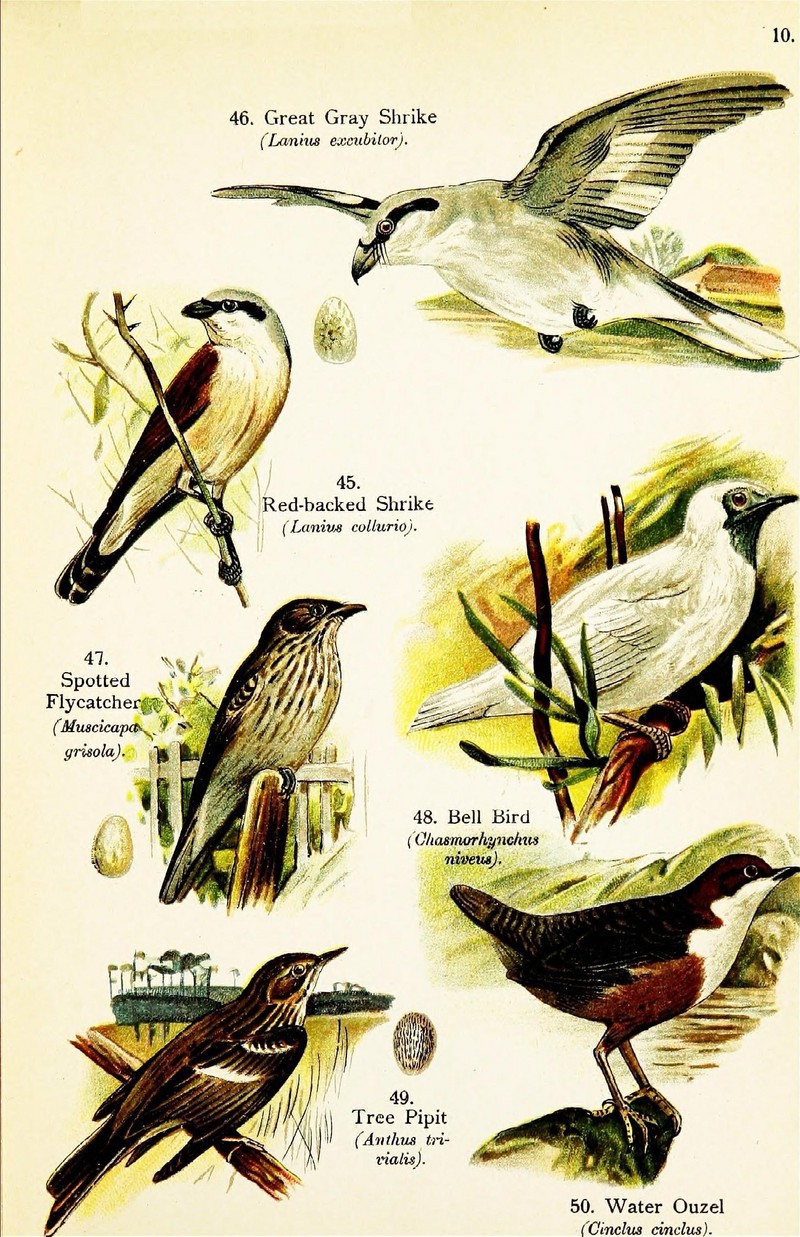|
| 질의: Birds of europe | 결과: 130번째/1706 | |
red-backed shrike (Lanius collurio), great grey shrike (Lanius excubitor), spotted flycatcher (Muscicapa striata), white bellbird (Procnias albus), tree pipit (Anthus trivialis), white-throated dipper (Cinclus cinclus)
| 제목: | red-backed shrike (Lanius collurio), great grey shrike (Lanius excubitor), spotted flycatcher (Muscicapa striata), white bellbird (Procnias albus), tree pipit (Anthus trivialis), white-throated dipper (Cinclus cinclus)
| | 올린이: | Wiki Photos (---@---.---)
| |

| 해상도: 1455x2249
파일크기: 753885 Bytes
등록시간: 2017:03:05 00:32:52
|
Description
45. Red-backed Shrike (Lanius collurio).
46. Great Gray Shrike (Lanius excubitor).
47. Spotted Flycatcher (Muscicapa grisola) = spotted flycatcher (Muscicapa striata)
48. Bell Bird (Chasmorhynchus niveus) = white bellbird (Procnias albus)
49. Pree Pipit (Anthus trivialis)
50. Water Ouzel (Cinclus cinclus) = white-throated dipper (Cinclus cinclus)
Date 1909
Source http://www.flickr.com/photos/biodivlibrary/7971259936
Author Hardcastle, Ella.; Knight, Charles Robert
Full title Birds of the world for young people,
Source: https://commons.wikimedia.org/wiki/File:Birds_of_the_world_for_young_people_(Pl._10)_(7971259936).jpg
The red-backed shrike (Lanius collurio) is a carnivorous passerine bird and member of the shrike family Laniidae.
The great grey shrike, northern grey shrike, or northern shrike (Lanius excubitor) is a large songbird species in the shrike family (Laniidae).
The spotted flycatcher (Muscicapa striata) is a small passerine bird in the Old World flycatcher family.
The white bellbird (Procnias albus) is a species of bird in the family Cotingidae.
The tree pipit, Anthus trivialis, is a small passerine bird which breeds across most of Europe and temperate western and central Asia.
The white-throated dipper (Cinclus cinclus), also known as the European dipper or just dipper, is an aquatic passerine bird found in Europe, Middle East, Central Asia and the Indian Subcontinent. |
^o^
동물그림창고 똑똑전화 누리집
^o^
|
|